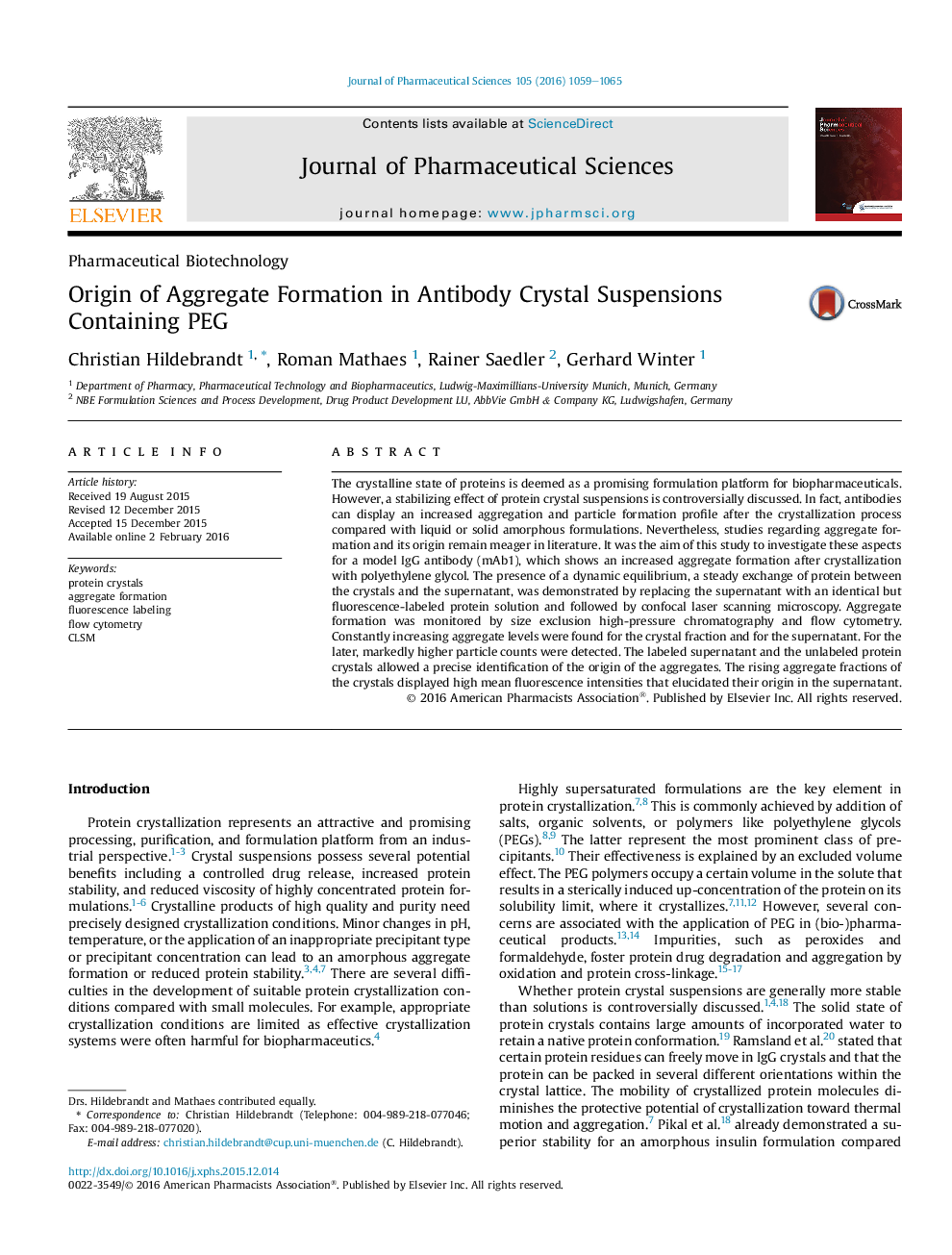| Article ID | Journal | Published Year | Pages | File Type |
|---|---|---|---|---|
| 2484546 | Journal of Pharmaceutical Sciences | 2016 | 7 Pages |
Abstract
The crystalline state of proteins is deemed as a promising formulation platform for biopharmaceuticals. However, a stabilizing effect of protein crystal suspensions is controversially discussed. In fact, antibodies can display an increased aggregation and particle formation profile after the crystallization process compared with liquid or solid amorphous formulations. Nevertheless, studies regarding aggregate formation and its origin remain meager in literature. It was the aim of this study to investigate these aspects for a model IgG antibody (mAb1), which shows an increased aggregate formation after crystallization with polyethylene glycol. The presence of a dynamic equilibrium, a steady exchange of protein between the crystals and the supernatant, was demonstrated by replacing the supernatant with an identical but fluorescence-labeled protein solution and followed by confocal laser scanning microscopy. Aggregate formation was monitored by size exclusion high-pressure chromatography and flow cytometry. Constantly increasing aggregate levels were found for the crystal fraction and for the supernatant. For the later, markedly higher particle counts were detected. The labeled supernatant and the unlabeled protein crystals allowed a precise identification of the origin of the aggregates. The rising aggregate fractions of the crystals displayed high mean fluorescence intensities that elucidated their origin in the supernatant.
Related Topics
Health Sciences
Pharmacology, Toxicology and Pharmaceutical Science
Drug Discovery
Authors
Christian Hildebrandt, Roman Mathaes, Rainer Saedler, Gerhard Winter,
